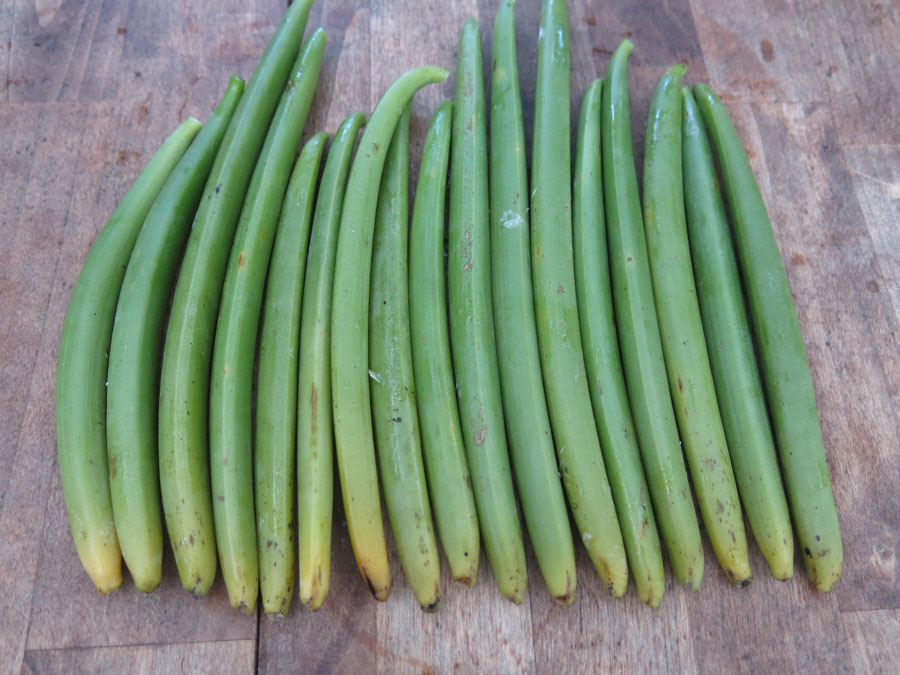

We are at the peak of the harvest season, and during this time, we are harvesting about a hundred beans out of the vanillery every two to three days. Choosing which beans to take requires some pretty sharp observation: the color change can be hard to see in the shady tangle of vines. The beans were pollinated almost a year ago, and a lot of vine growth has taken place since then, burying many of the brooms deep within the growth. In the dim light, it’s easy to mistake the gentle lightening that takes place as the bean matures for the clear signal of true ripeness.
Choosing the moment to harvest any one bean is a bit of a game of brinksmanship. We want the bean to be at the absolute peak of ripeness, but if you miss it or wait too long, the bean begins to split open, preparing to release it’s seeds. At that point, the vanilla pod cannot be sold as a whole bean, although it is still good for making extract. We’re looking for a strong orange-yellow color at the tip of the bean, along with a hint of the split beginning to form.

Oh, and watch out for the sap! Like many tropical plants, vanilla employs a chemical defense against foraging animals. This is due the presence of calcium oxilate crystals, which are small and sharp enough to get into the pores of your skin, causing minor but sometimes pretty painful irritation. During harvest, we’re careful not to touch the sap or get it on the skin. When handling freshly-harvested pods, latex gloves are used, as the sap is hard to avoid once the pods get into the harvest box.
